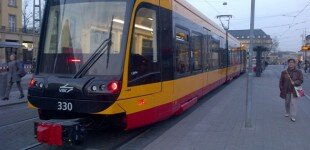New approval systems for rail interoperability and safety
On 30 June 2015, the Council confirmed a deal struck with the European Parliament on faster and less burdensome vehicle authorisation and safety certification procedures for European railways. The European Railway Agency (ERA) will play a key role in this. Together, the updated interoperability and safety directives and ERA regulation make up the technical pillar of the fourth railway package.
"Wrapping up a deal on the technical pillar was the Latvian presidency's first priority in the field of transport - and together with all parties involved we have achieved it", said Anrijs Matīss, the Latvian Minister for Transport. "The reform responds to requests from the European rail sector, which plays a substantial role in the EU's economy and helps make transport more environmentally friendly. The agreement will cut costs and red tape, and will thus help a sector that is presently facing growing international competition. An effective system should also contribute to jobs and growth in Europe."
Greater role for the European Railway Agency
The reform will give the European Railway Agency a greater role in safety certification of rail operators and authorisation of railway vehicles. Until now, when a rolling stock manufacturer wanted to place a new vehicle on the market in several EU countries, it had to lodge separate applications with the authorities of each of these countries. The situation has been the same for rail operators that want to provide services in various member states, as they need a certificate to prove that their safety management system is in order and that they are able to operate safely.
The new rules will eliminate the need for multiple applications. The ERA will issue all authorisations for vehicles intended for cross-border operations and all safety certificates to railway companies running cross-border services. National safety authorities will still have an important role in carrying out the necessary assessments.
For vehicles and operators involved in national transport only, the applicant will be able to choose whether its application will be processed and the authorisation issued by the Agency or the national authority.
The ERA will also have a greater role in the development of the European Railway Traffic Management System (ERTMS). It will assess the technical solutions envisaged before any call for tenders relating to ERTMS track-side equipment is issued, to ensure that the projects developed are interoperable.
The ERA will take on its certification and authorisation tasks within three years after the entry into force of the regulation. Member states will have one additional year to continue with the current system if they consider it necessary. In that case, they will have to inform the Agency and the Commission of their decision and provide a justification.
Easy and consistent procedures
To make the procedures easy and transparent, the ERA will set up an information and communication system which will act as a single entry point for all applications. In cases where the area of operation is limited to one member state, the applicant will use the system to select the authority it wants to process the application.
This "one-stop-shop" will allow both the Agency and the national safety authorities to follow the different stages of the application throughout the procedure. The ERA and national safety authorities will also concludecooperation agreements. The one-stop-shop and the cooperation agreements will guarantee a clear distribution of tasks between the ERA and the national authorities. They will also ensure consistency in the case of different applications for similar authorisations or certifications. The one-stop-shop system is to be in place within three years from the entry into force of the regulation.
Towards a Single European Railway Area
This more centralised authorisation and certification system brings Europe closer to a Single European Railway Area. It is expected to increase economies of scale for railway undertakings and manufacturers across the EU. It will cut administrative costs and speed up procedures, while maintaining the current high level of safety. At the same time it will help avoid any covert discrimination, in particular against new companies wishing to enter a railway market.
The new regulation will also result in a significant reduction in national rules in areas where harmonised EU level regulation is being introduced.
The technical pillar also sets up a coordination framework for national investigation bodies, while at the same time preserving their high level of independence. New elements of "just culture" have been introduced: for instance, the Commission is given the task of analysing this approach in relation to future proposals.
Other measures of the railway package still under discussion
The fourth railway package also includes a market pillar, with proposals to liberalise domestic rail passenger services and to strengthen the governance of infrastructure managers. The incoming Luxembourg presidency aims to achieve a general approach on the remaining two proposals in October. A general approach on the proposal on the normalisation of accounts was already adopted in December 2014.






There are no comments at the moment, do you want to add one?
Write a comment